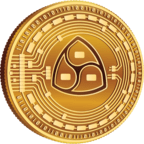While Litecoin is a promising digital currency, the primary question remains: will it succeed in the long run?
In the world of cryptocurrencies, Litecoin is one of the most popular ones out there. The primary reason behind Litecoin’s popularity is its peer-to-peer payment system. This means that you can send money to anyone, anywhere in the world, without incurring any fees from third parties.
Litecoin has been around since 2011 and is one of the oldest cryptocurrencies still used today. This blog post will answer some of the common questions about Litecoin.
How Does Litecoin Work?
Litecoin is a peer-to-peer cryptocurrency and open-source software project released under the MIT/X11 license. It was launched in 2011 by former Google employee Charlie Lee. Litecoin was designed to be an improved version of Bitcoin with lower transaction fees.
The Litecoin network generates 4 times as many coins like the Bitcoin network. It also has a much higher maximum number of coins. With these features, Litecoin creators are hoping to make Litecoin appeal more to merchants than miners, which will help reduce volatility because transactions won’t rely so heavily on speculation.
Bitcoin vs. Litecoin
Bitcoin and Litecoin are different forms of currency. Despite their similarities, there are quite a few significant differences between these two cryptocurrencies, which could make one more attractive than another, depending on your needs or goals.
- Litecoin stands out because it generates blocks four times faster than Bitcoin.
- Another key difference is that Litecoin uses Scrypt as its hashing algorithm instead of SHA-256 like Bitcoin does. The mining process for Litecoins also differs from Bitcoins in that it uses scrypt instead of SHA-256 algorithm, making it easier to mine on less powerful equipment. However, it is more difficult to compete against big players who have expensive ASICs hardware.
- Bitcoin also has higher transaction fees, which is not ideal for small purchases like buying coffee at Starbucks.
Risks Associated With Litecoin
Litecoin was created as a Bitcoin alternative with limited utility, faster transaction times, and lower transaction fees. However, many more cryptocurrencies have been launched since then that are better for specific uses, such as purchasing goods online or transferring money.
These alternatives offer more significant benefits than Litecoin because they’re safer and more practical than risking your investment in something so volatile.
Recently, Litecoin has gained a reputation as not being as sophisticated or innovative as Bitcoin. Its founder, Charlie Lee, who, during the era of the crypto bull market in December 2017, sold all his Litecoins out of fear that it could cause a conflict of interest. Others viewed him doing so just for signaling how long-term success didn’t really matter.
How To Buy Litecoin
If you are interested in buying Litecoin, consider the following steps:
- Find an exchange that offers Litecoin trading.
- Register for an account at the said exchange.
- Deposit funds into their corresponding wallet.
- Buy Litecoin using USD or whichever currency is accepted by the exchange.
- You can now withdraw your LTC from the exchange back into your personal wallet.
Final Word
While Litecoin is a promising digital currency, the primary question remains: will it succeed in the long run? Will people adopt it as a form of payment or keep it for investment purposes?
There’s no doubt that Litecoin offers some significant advantages. But, one thing that’s clear from our research is that many factors are at play, and we can’t answer this with certainty.
We know that people buy Litecoin for a variety of reasons. In case more individuals purchase Litecoin for investment purposes or use it as transferable funds, its value will likely increase.
Litecoin is also available on several major exchanges, which helps users purchase LTC with their traditional currencies, such as USD and EURO.


